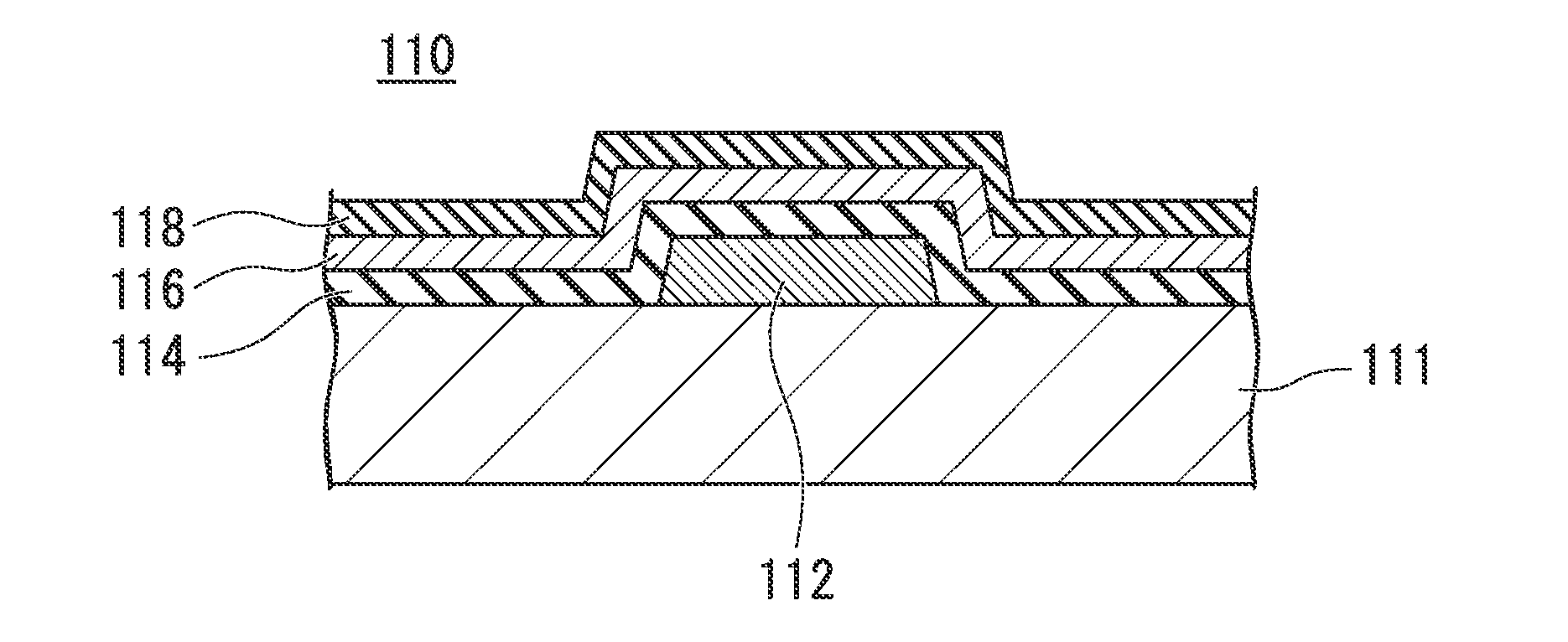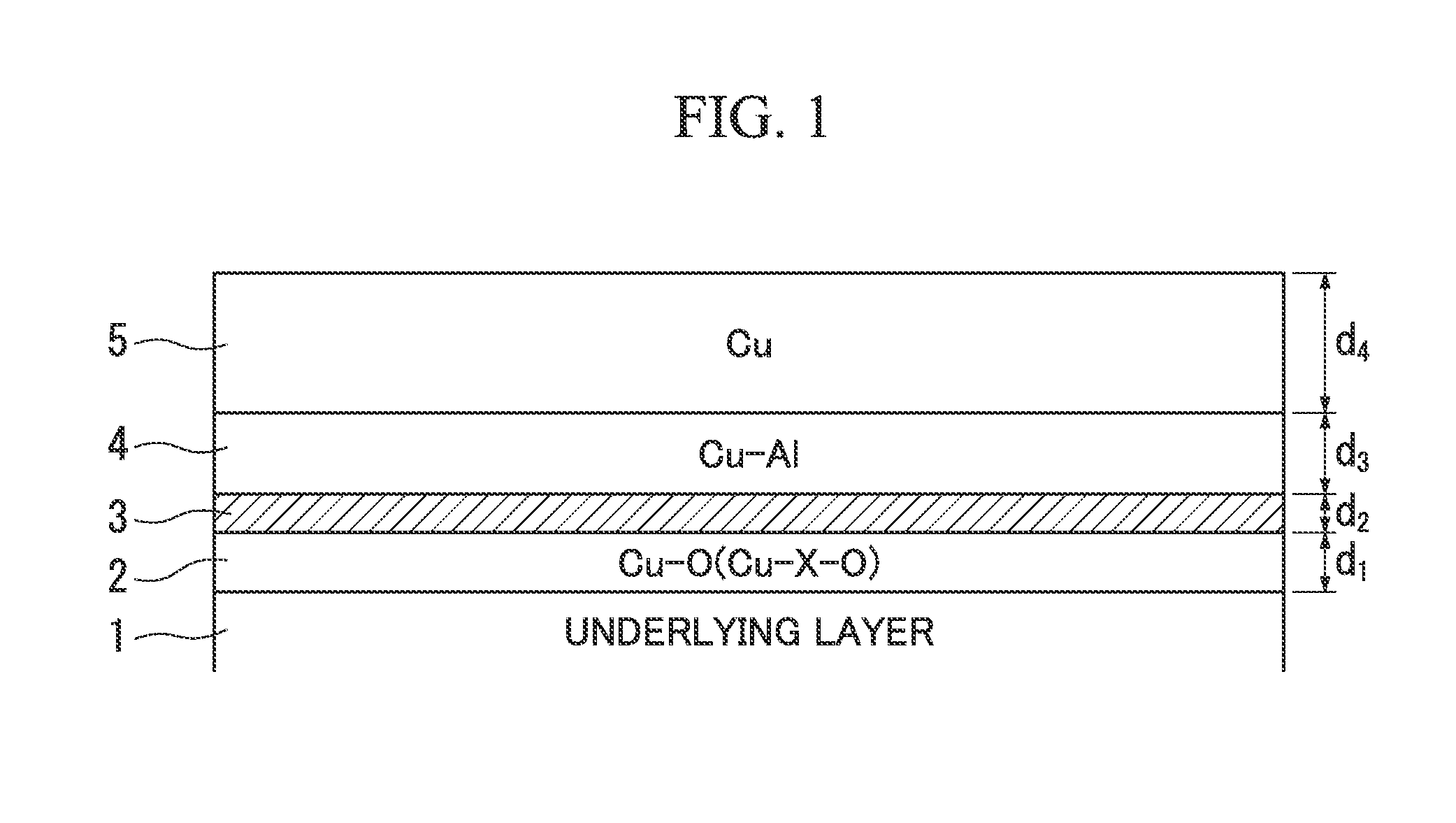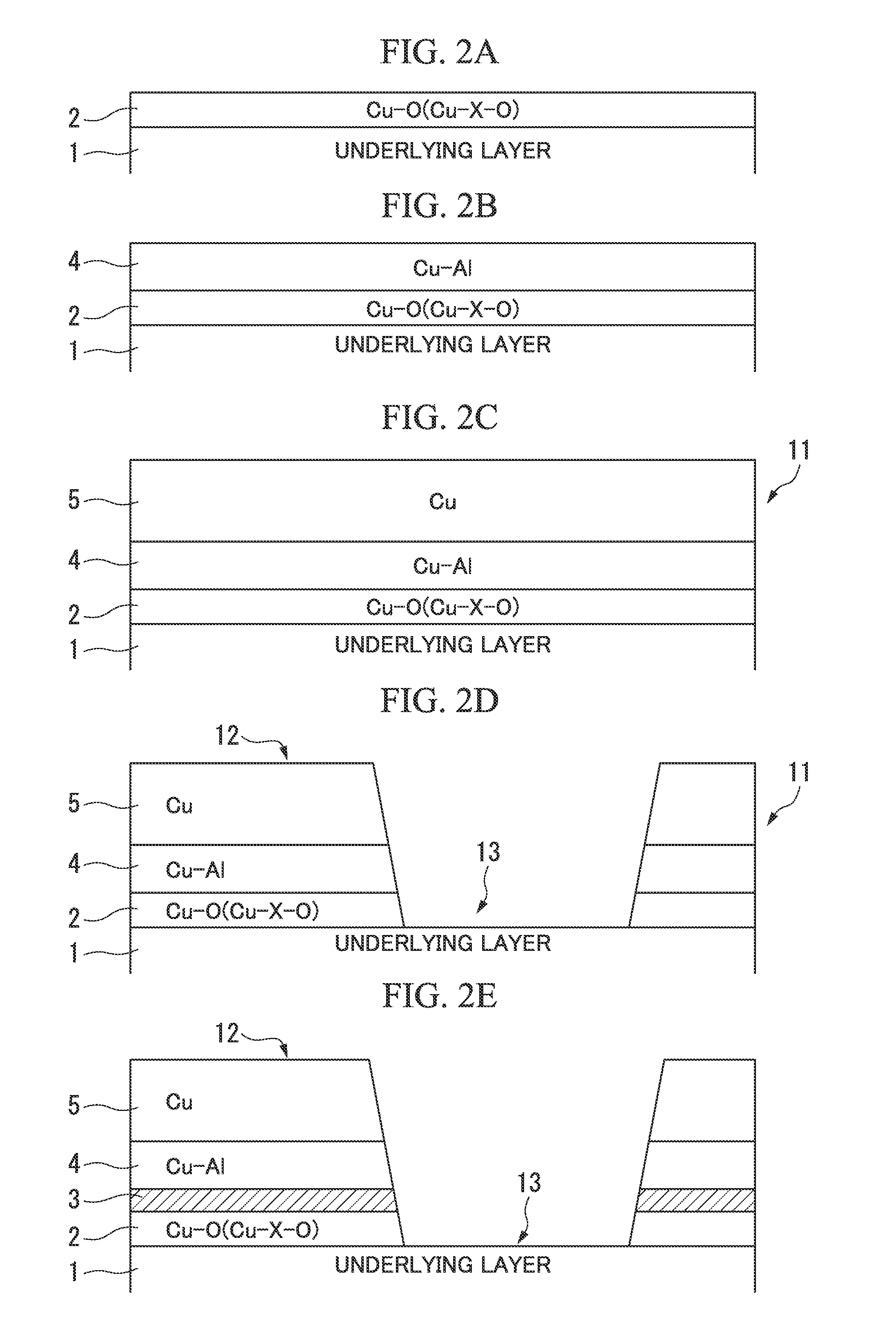Wiring layer structure and process for manufacture thereof
a layer structure and wire technology, applied in the direction of cable/conductor manufacturing, semiconductor/solid-state device details, transistors, etc., can solve the problems of reducing the adhesion property unstable dangle bonds, and affecting the adhesion of cu to the underlying substrate material, so as to improve the adhesion property and prevent diffusion. , the effect of excellent diffusion barrier property
- Summary
- Abstract
- Description
- Claims
- Application Information
AI Technical Summary
Benefits of technology
Problems solved by technology
Method used
Image
Examples
examples
[0090]Wiring layer structures were formed in reality on the basis of the present invention, and the wiring layer structures were evaluated. Hereinafter, the evaluation results will be described.
[0091]At first, a glass substrate having dimensions of 320 mm long, 400 mm wide, and 0.7 mm thick was prepared of which the surface was coated with an amorphous Si layer.
[0092](Preparation of Oxygen-Containing Cu Alloy Layer)
[0093]Next, a Cu alloy sputtering target was prepared by melting and adjusting the composition to include Cu-4atom % Al (melting adjustment). The glass substrate was loaded in a sputtering apparatus, and sputtering was performed using the Cu alloy sputtering targets under the following conditions to form an oxygen-containing Cu alloy layer having a thickness of 50 nm:
[0094]Atmosphere: oxidizing atmosphere of Ar+oxygen (Ar / oxygen=90 / 10 by vol %);
[0095]Pressure of the atmosphere: 0.4 Pa; and
[0096]Substrate heating temperature: 100° C.
[0097](Preparation of Cu Alloy Layer)
[00...
PUM
| Property | Measurement | Unit |
|---|---|---|
| thickness | aaaaa | aaaaa |
| thickness | aaaaa | aaaaa |
| thickness | aaaaa | aaaaa |
Abstract
Description
Claims
Application Information
 Login to View More
Login to View More - R&D
- Intellectual Property
- Life Sciences
- Materials
- Tech Scout
- Unparalleled Data Quality
- Higher Quality Content
- 60% Fewer Hallucinations
Browse by: Latest US Patents, China's latest patents, Technical Efficacy Thesaurus, Application Domain, Technology Topic, Popular Technical Reports.
© 2025 PatSnap. All rights reserved.Legal|Privacy policy|Modern Slavery Act Transparency Statement|Sitemap|About US| Contact US: help@patsnap.com



